
GALEAS™ Tumor
Cancer Genomic Profiling
Advanced NGS-Based Identification of Tumor Mutations
GALEAS™ Tumor is a cutting-edge next-generation sequencing (NGS) solution designed to provide in-depth cancer genomic profiling. It enables the detection of clinically significant biomarkers, offering insights into tumor mutational burden (TMB), microsatellite instability (MSI), and structural variations.
Key Features of GALEAS™ Tumor
Clinically Relevant and Up-to-Date Content
- Aligned with UK NHS National Genomic Test Directory, NCCN, FDA, and ESMO guidelines
- Covers 519 genes, including SNVs, INDELs, CNVs, and fusion genes
- Provides TMB and MSI scoring for immunotherapy prediction
- Includes 64 pharmacogenomics SNPs, hereditary and pediatric cancer insights, and HLA profiling for solid tumor
Advanced Immune-Oncology Biomarker Detection
- Integrated TMB and MSI analysis for assessing tumor genomic instability
- Supports precision medicine approaches for immunotherapy response prediction
Powerful GALEAS™ Analysis Software
- Cloud-based platform for rapid and accurate variant calling (SNV, INDEL, SV, CNV, TMB, MSI)
- Enhanced CNV detection with resolution >1Mb
- User-friendly bioinformatics solution developed alongside the panel
GALEAS™ Tumor Panel Design
This NGS solution covers essential driver mutations and key immuno-oncology biomarkers with:
- Identity tracking SNPs
- SNVs, CNVs, INDELs across 519 genes
- Enhanced CNV backbone for improved copy number variation detection
- Comprehensive coverage of 1p/9q codeletion (Glioma-associated)
- Structural variant detection including ALK, BRAF, EGFR, FGFR2, FGFR3, NTRK1, NTRK2, RET, ROS1, TMPRSS2
- 64 pharmacogenomics SNPs relevant to oncology
- HLA gene profiling for solid tumor characterization
High-Precision Variant Detection
SNV and INDEL Accuracy
- Validation using FFPE reference samples confirmed and R2 correlation of 0.99 at 500x depth (Figure 1)

- Achieved 100% accuracy in somatic mutation detection across 50 colorectal cancer (CRC) samples (Figure 2)
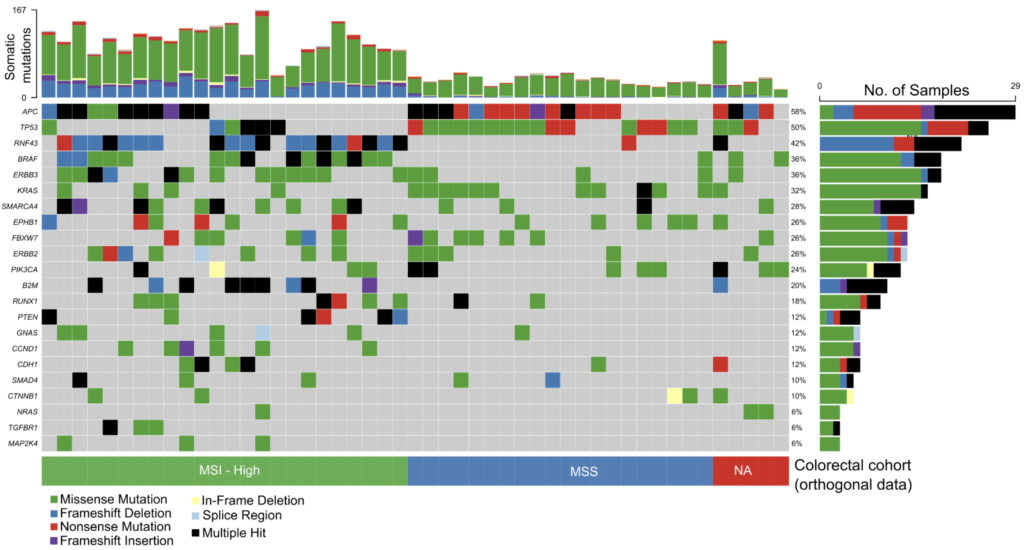
Copy Number Variant (CNV) Detection
- Enhanced CNV calling with a resolution >1Mb
- Strong correlation observed between GALEAS™ Tumor CNV data and shallow whole genome sequencing (sWGS) results (Figure 3)
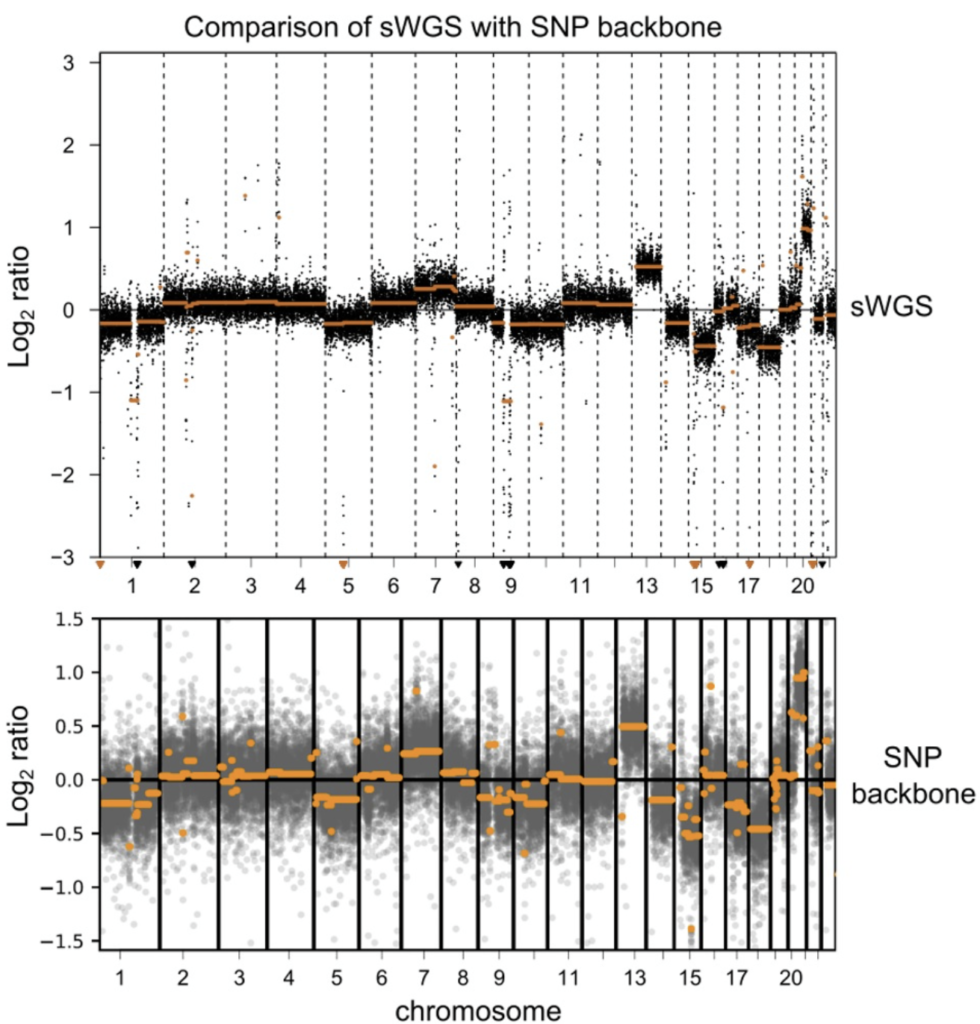
- Validated detection of CNV alterations in EGFR and MET genes (3, 6, and 12 copies tested)
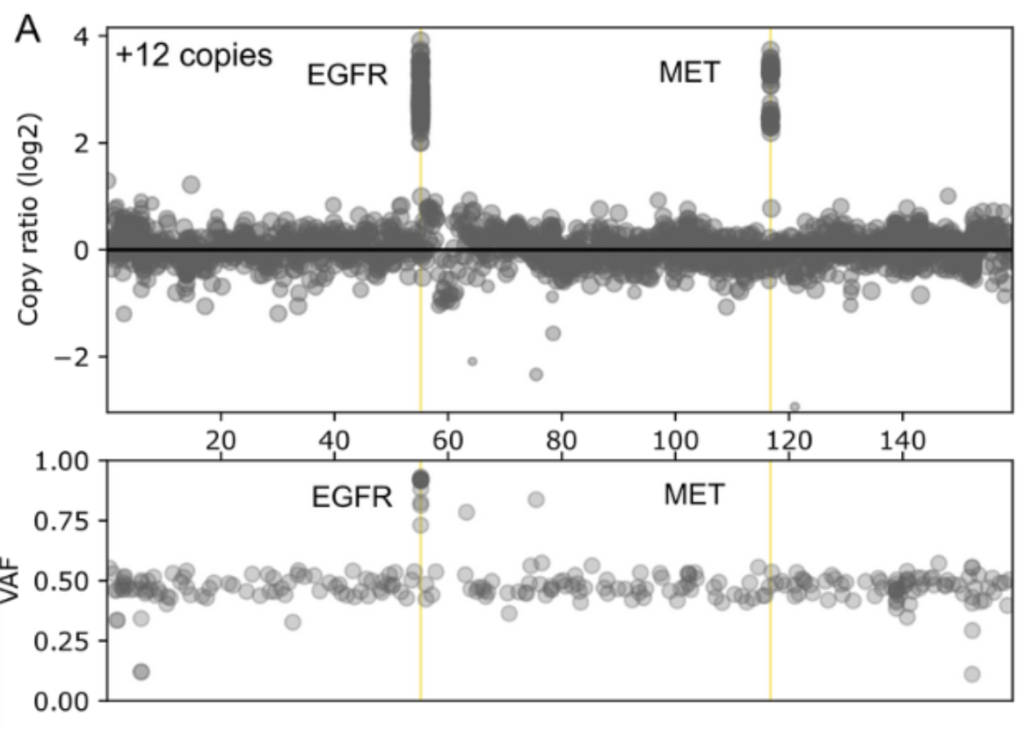
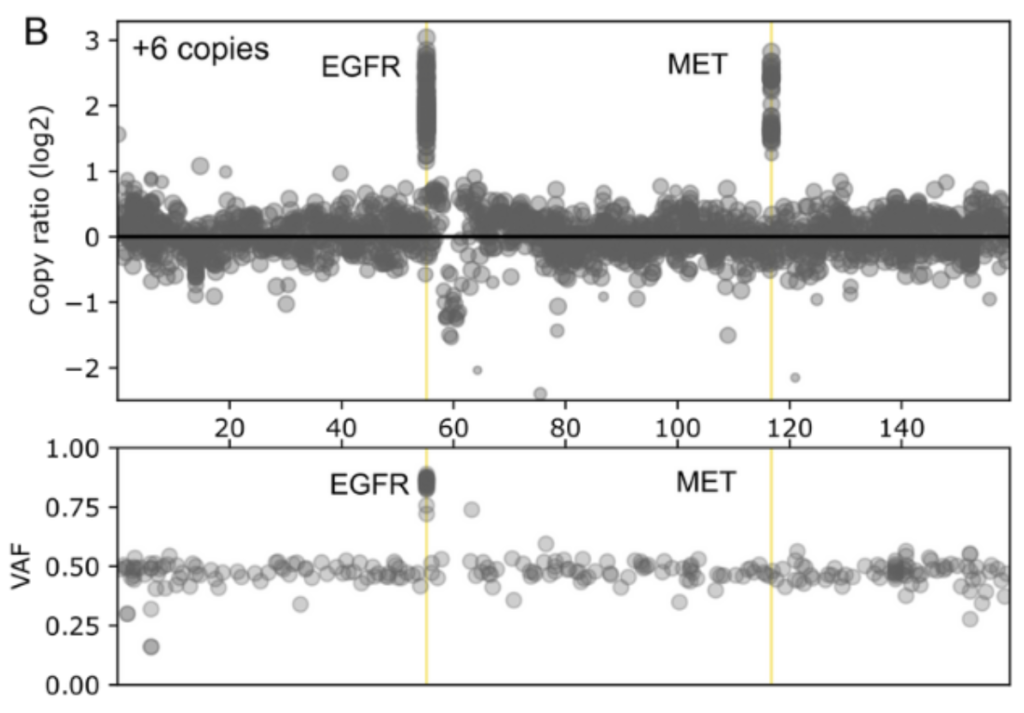
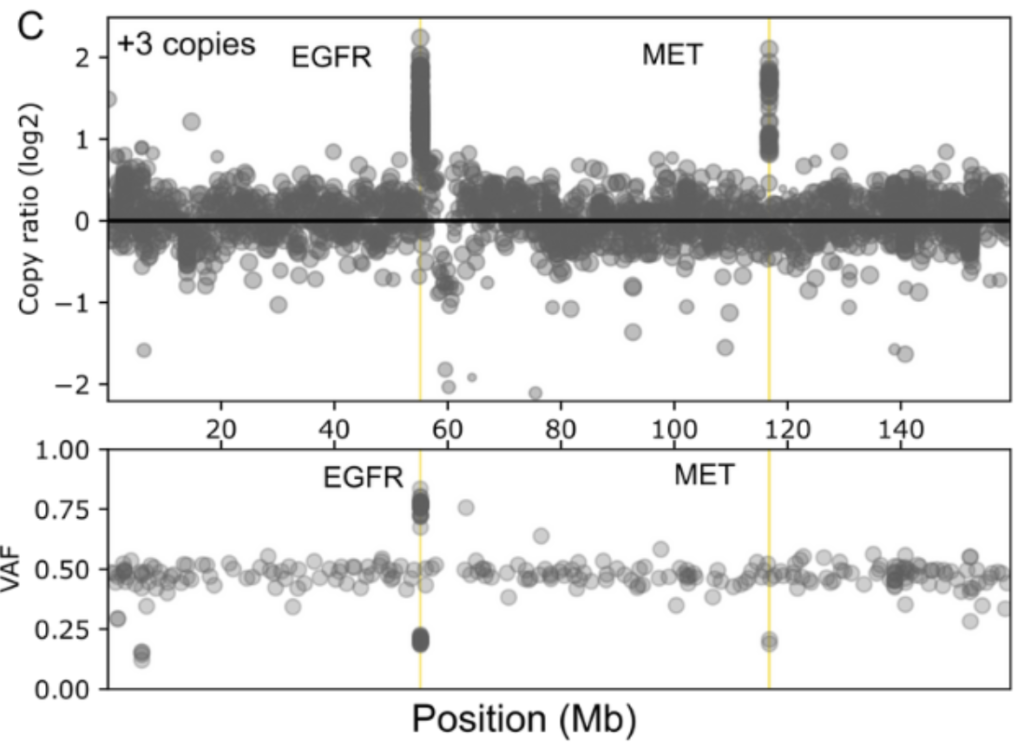
Microsatellite Instability (MSI) Scoring
- Confirmed MSI-High status in 23/24 CRC FFPE samples
- Reliable MSI classification for normal, MSS, and MSI-H samples
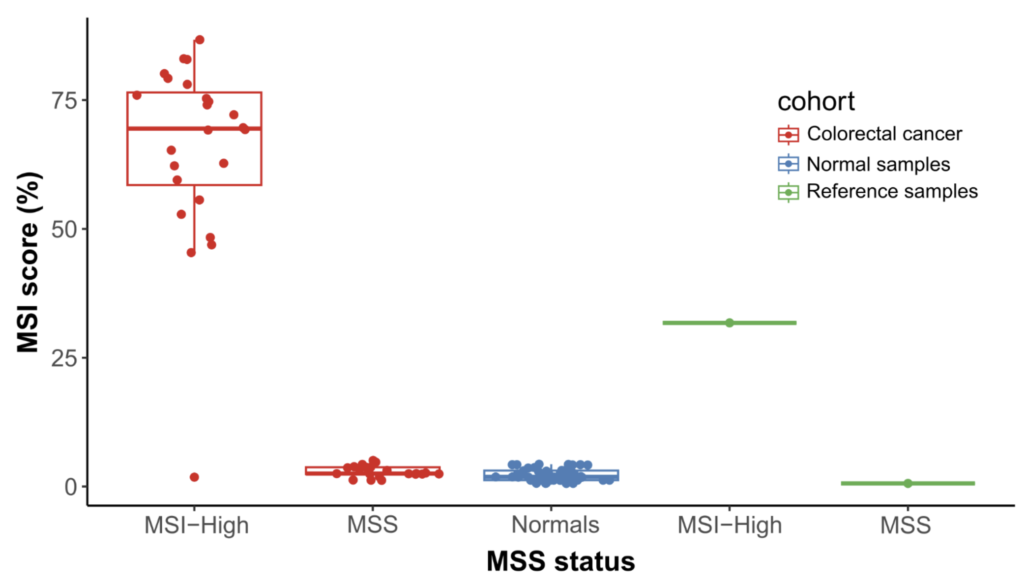
Tumor Mutational Burden (TMB) Analysis
- Strong correlation between TMB scores and MSI status in CRC samples
- Provides reliable TMB scoring even in small panels with low mutation levels

- High on-target rates for increased sequencing efficiency
- Uniform coverage across clinically relevant genes
- Enables precise and reproducible variant detection
GALEAS™ Analysis Software
- Designed to enhance GALEAS™ Tumor panel performance
- Enables accurate TMB/MSI analysis with a streamlined bioinformatics workflow
GALEAS™ Tumor is a clinically validated comprehensive NGS solution that enables the analysis of SNV, CNV, INDEL, and TMB/MSI across 519 genes within a single NGS workflow.
Enhanced probe design, comprehensive gene coverage, and high coverage uniformity allow for accurate and sensitive detection of SNV, INDEL, SV, and CNV. When combined with the GALEAS™ Analysis Software solution, it offers a simple and user-friendly workflow from sample preparation to analysis.
References
- Ciriello G, Miller ML, Aksoy BA, Senbabaoglu Y, Schultz N, Sander C. Emerging landscape of oncogenic signatures across human cancers. Nature genetics. 2013;10):1127-33.
- The ICGC/TCGA PanCancer Analysis of Whole Genomes Consortium. Pan-cancer analysis of whole genomes. Na- ture. 2020: 82-93.
- Endris V, Buchhalter I, Allgäuer M, Rempel E, Lier A, Vol- ckmar AL, et al. Measurement of tumor mutational bur- den (TMB) in routine molecular diagnostics: in silico and real-life analysis of three larger gene panels. International journal of cancer. 2019;144(9):2303-12.
- Schrock AB, Ouyang C, Sandhu J, Sokol E, Jin D, Ross JS, et al. Tumor mutational burden is predictive of response to immune checkpoint inhibitors in MSI-high metastatic colorectal cancer. Annals of Oncology. 2019;30(7):1096-103.
Panel Specifications
| Parameters | Specification |
|---|---|
| Enrichment method | Hybridization and capture |
| Number of genes | 519 |
| Capture Panel Size | 3.74Mb |
| Sequencing platform | Illumina |
| Targets | Genes associated with common cancers |
| Variant types | SNVs, CNVs and indels |
| Input DNA requirements | 10ng-200ng |
| Sample type | gDNA from FFPE, frozen tissue or blood |
| Multiplexing guidance for sequencing | 25M reads per sample required to achieve 500x. This equates to 5Gb per sample |
Ordering Information
| Product Name | Catalogue No. |
|---|---|
| GALEAS Tumor Kit Frag A (96 samples) | NGS_GAL_TCP_FR_96_A |
| GALEAS Tumor Kit Frag B (96 samples) | NGS_GAL_TCP_FR_96_B |
| GALEAS Tumor Kit Frag C (96 samples) | NGS_GAL_TCP_FR_96_C |
| GALEAS Tumor Kit Frag D (96 samples) | NGS_GAL_TCP_FR_96_D |
| GALEAS Tumor Kit Frag (16 samples) | NGS_GAL_TCP_FR_16 |
- A: Adapter plate with indexes 1–96
- B: Adapter plate with indexes 97–192
- C: Adapter plate with indexes 193–288
- D: Adapter plate with indexes 289–384









